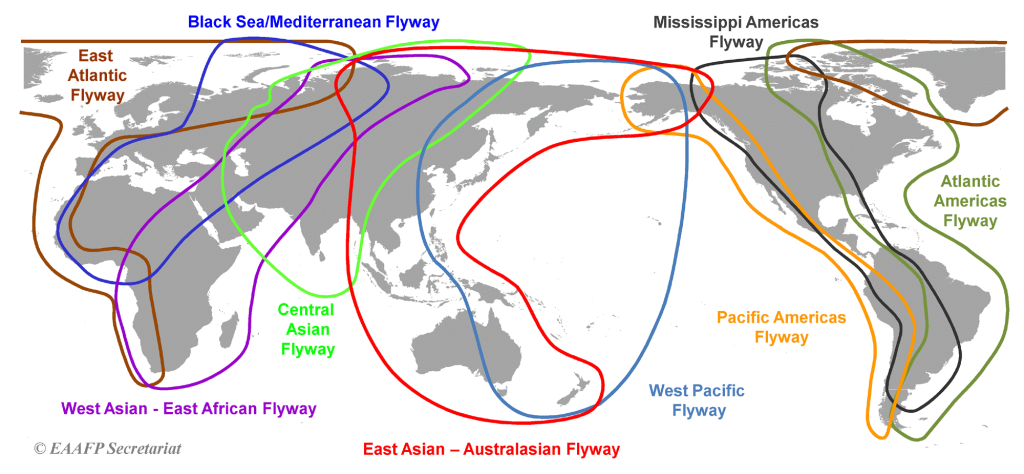By Anson M. Tagtag and John Berhel Doria
On March 5, 2020, the DENR Region 13 confirmed the presence of seven Hooded cranes (Grus monacha) in Brgy. Libertad, Sta. Monica, Siargao Island, the first record of the species in the country. The sighting was previously reported on February 25, 2020 by Greg Laude, a member of the Wild Bird Club of the Philippines.
Hooded cranes are mostly found in grasslands and wetlands of south-central and south-eastern Siberia, Russia. Adult Hooded cranes are one of the smallest cranes in the world. They have dark grey bodies, a white head and neck, and a dark red patch on their forehead. The majority of this species winters in Japan, while smaller numbers head to Korea and Eastern China (Birdlife International). Their global population is estimated to be around 2,500-10,000 individuals and declining due to habitat loss and degradation in their wintering grounds, and categorized as Vulnerable by the IUCN.
Mr. Arne Jensen, an ornithologist of Wetlands International-Philippines posited that this group of cranes were likely blown further south by recent strong northeast monsoons.
Authorities of the DENR-CARAGA reiterated to the local communities the need to protect these migratory birds. The Philippines is a member of the Convention on the Conservation of Migratory Species and Wild Animals and thus endeavors to protect migratory species through implementation of its Wildlife Conservation and Protection Act (R.A. 9147).

Situated in the middle of the East Asian-Australasian Flyway, over 400,000 migratory birds stopover in inland and coastal wetlands of the Philippines to rest and refuel for their onward journey. Waves of birds migrating southward of the globe arrive in the Philippines at around September with peak arrivals in January. They travel northward back to their breeding grounds at around March. The seven Hooded cranes, though detoured from their normal route are nonetheless fortunate to have landed in Siargao Island Protected Landscape and Seascape where they are protected from hunting. The cranes are expected to head northward to Russia in time for their breeding season.

| Bird migration flyways of the world. The East Asian- Australasian Flyway straddles 22 states: Russia, USA (Alaska), Mongolia, China, North Korea, South Korea,Japan, Philippines, Bangladesh Thailand Cambodia, Indonesia, Laos, Myanmar, Vietnam,Malaysia,Singapore, Brunei Darussalam, East Timor,Papua New Guinea, Australia, New Zealand (Source: EAAFP Secretariat) |



